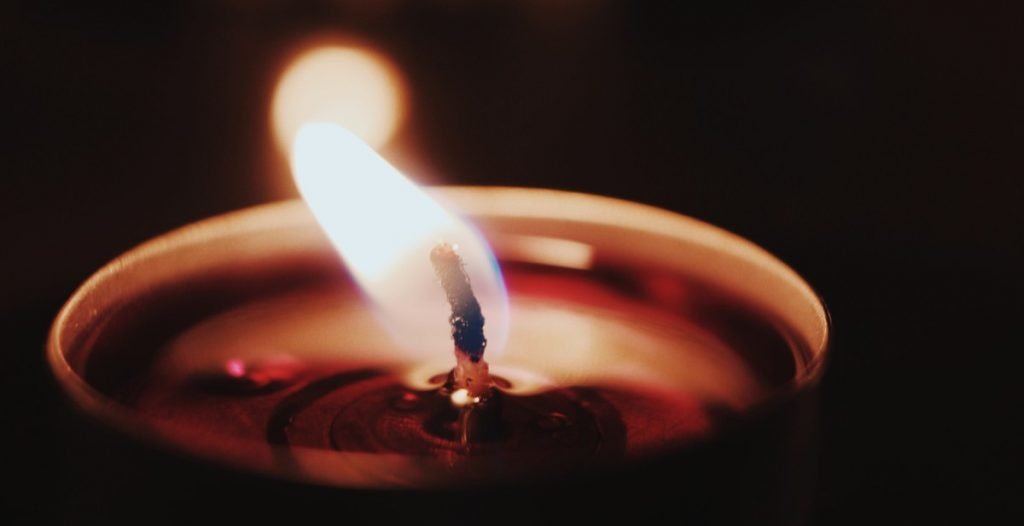Introduction
Candles are a popular way to create ambiance and add fragrance to any room. However, not all candles are created equal. Some candles produce more soot than others, while others burn out quickly, leaving you with a shorter time to enjoy their scent. One of the most important factors that determine the quality of a candle is the type of wick used.
Choosing the right wick for your candle is crucial as it can affect not only the burn time but also the amount of soot produced. Soot is the black residue that can accumulate on walls, ceilings, and other surfaces in your home. It can also be harmful to your health if you inhale it regularly. Additionally, a wick that is too small for your candle can result in a weak flame, while a wick that is too large can cause the wax to melt too quickly, leading to a shorter burn time.
With so many different types of wicks available, it can be challenging to know which one to choose. This article will explore the best types of wicks for reducing soot and prolonging the burn time of candles, helping you select the perfect wick for your next candle-making project.

Types of Wicks for Reducing Soot and Prolonging Candle Burn Time
Choosing the right wick for your candle can make all the difference in its performance. The type of wick you use affects how much soot your candle produces, how long it burns, and how well it distributes fragrance. Here are some of the best types of wicks for reducing soot and prolonging the burn time of your candles:
Cotton Wicks
Cotton wicks are the most commonly used wicks for candles. They are made from braided cotton fibers and are available in various sizes. Cotton wicks are a great choice for reducing soot and producing a clean burn. They work well with most types of wax and are easy to find. Cotton wicks are also affordable and readily available.
Wooden Wicks
Wooden wicks are a newer type of wick that have gained popularity in recent years. They are made from natural wood and provide a unique crackling sound when burned. Wooden wicks are great for distributing fragrance and producing a longer burn time. They work best with soy wax and are ideal for larger candles. Wooden wicks are more expensive than cotton wicks, but they are worth the investment for their unique qualities.
Paper Wicks
Paper wicks are another type of wick that are gaining popularity. They are made from a blend of paper and cotton fibers and provide a clean burn. Paper wicks are great for reducing soot and work well with most types of wax. They are also affordable and easy to find.
Zinc-Core Wicks
Zinc-core wicks are a type of wick that has a small zinc wire running through the center. The wire provides added stability to the wick and helps it burn evenly. Zinc-core wicks are great for producing a longer burn time and work well with paraffin wax. However, they can produce more soot than other types of wicks and should be used with caution.
| Wick Type | Pros | Cons |
|---|---|---|
| Cotton | Reduces soot, clean burn, affordable | May not work well with all types of wax |
| Wooden | Unique crackling sound, longer burn time, distributes fragrance well | More expensive than cotton wicks, may not work well with all types of wax |
| Paper | Reduces soot, clean burn, affordable | May not work well with all types of wax |
| Zinc-Core | Provides added stability, longer burn time | May produce more soot than other types of wicks |
Choosing the right wick for your candle depends on several factors, including the type of wax you use, the size of your candle, and the fragrance you want to produce. By understanding the pros and cons of each type of wick, you can make an informed decision and create a candle that burns cleanly and evenly.

Factors to consider when selecting a wick
Choosing the right wick is crucial for achieving optimal burn time and reducing soot production in candles. Here are some important factors to consider when selecting a wick:
Candle size
The size of your candle will determine the thickness and length of the wick needed. A larger candle will require a thicker wick to ensure complete wax consumption and prevent tunneling. On the other hand, a smaller candle will require a thinner wick to avoid excessive heat and soot production. It is important to match the wick size to the candle size for optimal performance.
Fragrance and color
The fragrance and color of your candle can also impact the performance of the wick. Fragrances and dyes can affect the burn rate and heat output of the candle, which in turn can impact the wick’s ability to properly burn the wax. It is recommended to test different wick sizes with your chosen fragrance and color to find the best match for optimal performance.
Wax type
The type of wax used in your candle can also affect the wick’s performance. Different waxes have different melting points and burn rates, which can impact the wick’s ability to burn the wax completely and reduce soot production. It is important to choose a wick that is compatible with the type of wax being used for optimal performance.
| Candle Size | Recommended Wick Size |
|---|---|
| Small (less than 2 inches in diameter) | Thin wick (such as cotton core or zinc core) |
| Medium (2-3 inches in diameter) | Medium wick (such as cotton core or zinc core) |
| Large (more than 3 inches in diameter) | Thick wick (such as cotton core or wooden wick) |
Overall, selecting the right wick for your candle requires careful consideration of the candle size, fragrance and color, and wax type. Testing different wick sizes and types is recommended to find the best match for optimal burn time and reduced soot production.

Tips for reducing soot and prolonging burn time
When it comes to candle burning, reducing soot and prolonging burn time are two crucial factors to consider. Here are some tips to help you achieve these goals:
1. Trim the wick
Trimming the wick before lighting the candle is essential for reducing soot and prolonging burn time. A wick that is too long will produce excess soot and cause the candle to burn faster. Trim the wick to about 1/4 inch before lighting the candle.
2. Use the right size wick
Using the right size wick for your candle is important for reducing soot and prolonging burn time. A wick that is too small will not burn the wax evenly, while a wick that is too large will produce excess soot. Consult a wick size chart to determine the right size wick for your candle.
3. Avoid drafts
Avoid placing your candle in a drafty area as this can cause the flame to flicker and produce excess soot. Keep your candle away from open windows, fans, and air conditioning vents.
4. Let the wax pool
Allow the wax to pool to the edge of the container before extinguishing the flame. This will help to ensure an even burn and prevent tunneling, which can reduce burn time. It is also important to burn your candle for at least 1 hour for every inch of its diameter to prevent tunneling.
By following these tips, you can reduce soot and prolong the burn time of your candles, ensuring a clean and long-lasting burn.

Conclusion: Choose the Right Wicks for Your Candles
Choosing the right wick for your candles is crucial if you want to reduce soot and prolong their burn time. By selecting the right wick, you can ensure that your candles burn cleanly and efficiently, while also creating a beautiful and inviting atmosphere in your home.
When selecting a wick, consider the type of wax you are using, the size and shape of your candle, and the desired burn time. Cotton wicks are a popular choice for many candle makers, but other natural materials like hemp and wood can also be effective. For longer burn times, consider using a thicker wick or a wick with a larger diameter, while thinner wicks are ideal for shorter burn times.
It’s also important to remember that wick selection is not a one-size-fits-all solution. Each candle is unique, and it’s important to experiment with different wicks to find the one that works best for your specific candle-making needs.
Final Thoughts
Overall, choosing the right wick for your candles is an essential step in creating beautiful and long-lasting candles. By considering the factors discussed in this article and experimenting with different wicks, you can create candles that burn cleanly, efficiently, and beautifully.
Whether you are a seasoned candle maker or just starting out, taking the time to select the right wick will help you create candles that you can be proud of.



